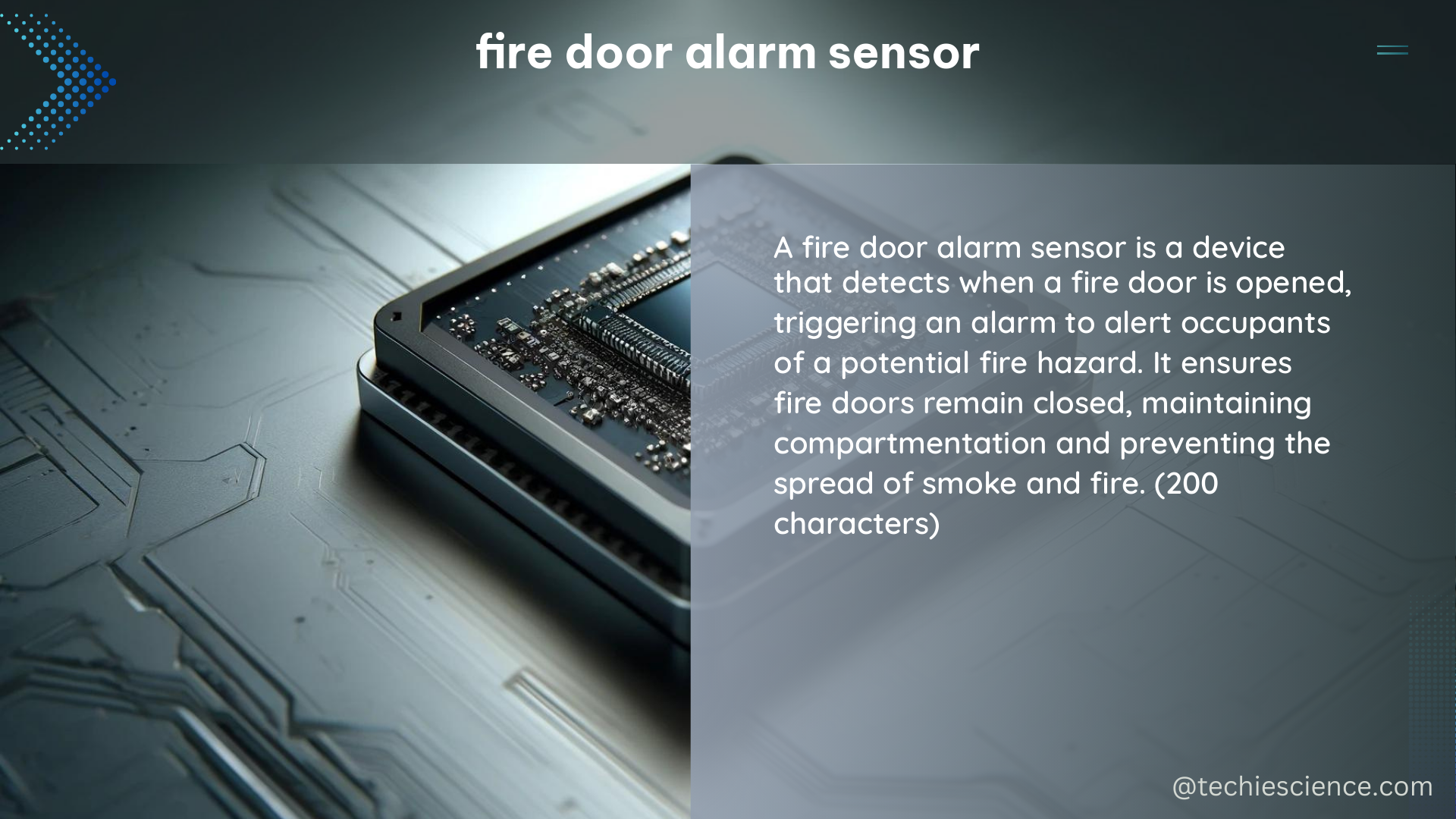The fire door alarm sensor is an essential component of fire safety systems, designed to detect and alert occupants and authorities in case of a fire emergency. This comprehensive guide will delve into the technical specifications and provide a step-by-step DIY installation process to ensure your fire safety system is optimized for maximum protection.
Technical Specifications of Fire Door Alarm Sensor
Sensing Range
Fire door alarm sensors typically have a sensing range of up to 5 meters, ensuring reliable detection of fire-related events. The sensing range can vary depending on the sensor’s sensitivity and the surrounding environment. Higher-end models may offer an extended sensing range of up to 10 meters, providing enhanced coverage for larger spaces.
Response Time
The response time for fire door alarm sensors is usually less than 60 seconds, allowing for quick activation in case of a fire. Advanced sensors can have a response time as low as 10 seconds, enabling a faster emergency response. The response time is a critical factor in fire safety, as it directly impacts the time available for occupants to evacuate and for emergency services to arrive.
Power Consumption
Power consumption varies between models, but most fire door alarm sensors require minimal power, typically around 12-24V DC. Some sensors may also have the option for battery backup, ensuring continued operation even during a power outage. The power consumption is an important consideration, as it affects the overall energy efficiency and maintenance requirements of the fire safety system.
Operating Temperature
The operating temperature range for fire door alarm sensors is usually between -20°C to +60°C, ensuring reliable performance in various environments. This wide temperature range allows for installation in both indoor and outdoor settings, catering to diverse building and facility requirements. Some specialized sensors may even operate in more extreme temperature conditions, such as -40°C to +80°C, for use in industrial or harsh environments.
Communication Protocols
Fire door alarm sensors often support communication protocols such as Wi-Fi, Zigbee, or Bluetooth, enabling seamless integration with existing fire safety systems. This allows for remote monitoring, centralized control, and real-time alerts, improving the overall effectiveness of the fire safety system. The choice of communication protocol depends on the specific requirements of the installation, such as the size of the facility, the number of sensors, and the desired level of integration with other building management systems.
Certifications
Fire door alarm sensors must comply with industry standards and regulations, such as UL (Underwriters Laboratories), FM (Factory Mutual), or CE (Conformité Européenne) certifications. These certifications ensure the sensor’s reliability, performance, and adherence to safety guidelines, providing assurance that the device will function as intended in the event of a fire emergency.
DIY Installation of Fire Door Alarm Sensor

Choose the Right Location
When installing a fire door alarm sensor, it is crucial to select the optimal location. The sensor should be installed at a height of 1-2 meters from the floor, ensuring optimal sensing performance and coverage. Avoid placing the sensor in areas with obstructions or high traffic, as these can interfere with the sensor’s ability to detect fire-related events.
Mount the Sensor
Use the provided bracket or adhesive to securely mount the fire door alarm sensor to the wall or ceiling. Ensure that the sensor has a clear line of sight to the fire door, as this will enhance its ability to detect any changes in the door’s status. Follow the manufacturer’s instructions carefully to ensure proper installation and avoid any potential issues.
Connect the Sensor
Connect the fire door alarm sensor to the fire safety system using the appropriate communication protocol, such as Wi-Fi, Zigbee, or Bluetooth. Refer to the sensor’s user manual or consult with a professional installer to determine the best method of integration. Once connected, test the communication to ensure the sensor is properly integrated and able to transmit alerts to the central monitoring system.
Test the Sensor
Regularly test the fire door alarm sensor to ensure it is functioning correctly. This includes testing the alarm activation and response time. Simulate a fire event by temporarily blocking the sensor or triggering the alarm manually, and verify that the system responds as expected. Document the test results and maintain a record of the sensor’s performance to ensure compliance with local fire safety regulations.
By following these steps, you can ensure that your fire door alarm sensor is properly installed and configured to provide reliable fire detection and emergency response capabilities. Remember to consult with local authorities and follow all applicable fire safety codes and regulations to ensure the safety of your building’s occupants.
References:
- Muñoz, A., Serrano, E., Villa, A., Valdés, M., & Botía, J. A. (2012). An Approach for Representing Sensor Data to Validate Alerts in Ambient Assisted Living. Sensors, 12(5), 6282-6306. https://doi.org/10.3390/s120506282
- Federal Emergency Management Agency (FEMA). (2020). Comprehensive Preparedness Guide (CPG) 201, 3rd Edition. Retrieved from https://www.fema.gov/sites/default/files/2020-07/threat-hazard-identification-risk-assessment-stakeholder-preparedness-review-guide.pdf
- Raspberry Pi Forums. (2013). USB RFID door alarm system help with code needed. Retrieved from https://forums.raspberrypi.com/viewtopic.php?t=51932
- Florida Fire Code 2021. (2021). Chapter 3: Definitions. Retrieved from https://up.codes/viewer/florida/nfpa-1-2021/chapter/3/definitions

The lambdageeks.com Core SME Team is a group of experienced subject matter experts from diverse scientific and technical fields including Physics, Chemistry, Technology,Electronics & Electrical Engineering, Automotive, Mechanical Engineering. Our team collaborates to create high-quality, well-researched articles on a wide range of science and technology topics for the lambdageeks.com website.
All Our Senior SME are having more than 7 Years of experience in the respective fields . They are either Working Industry Professionals or assocaited With different Universities. Refer Our Authors Page to get to know About our Core SMEs.